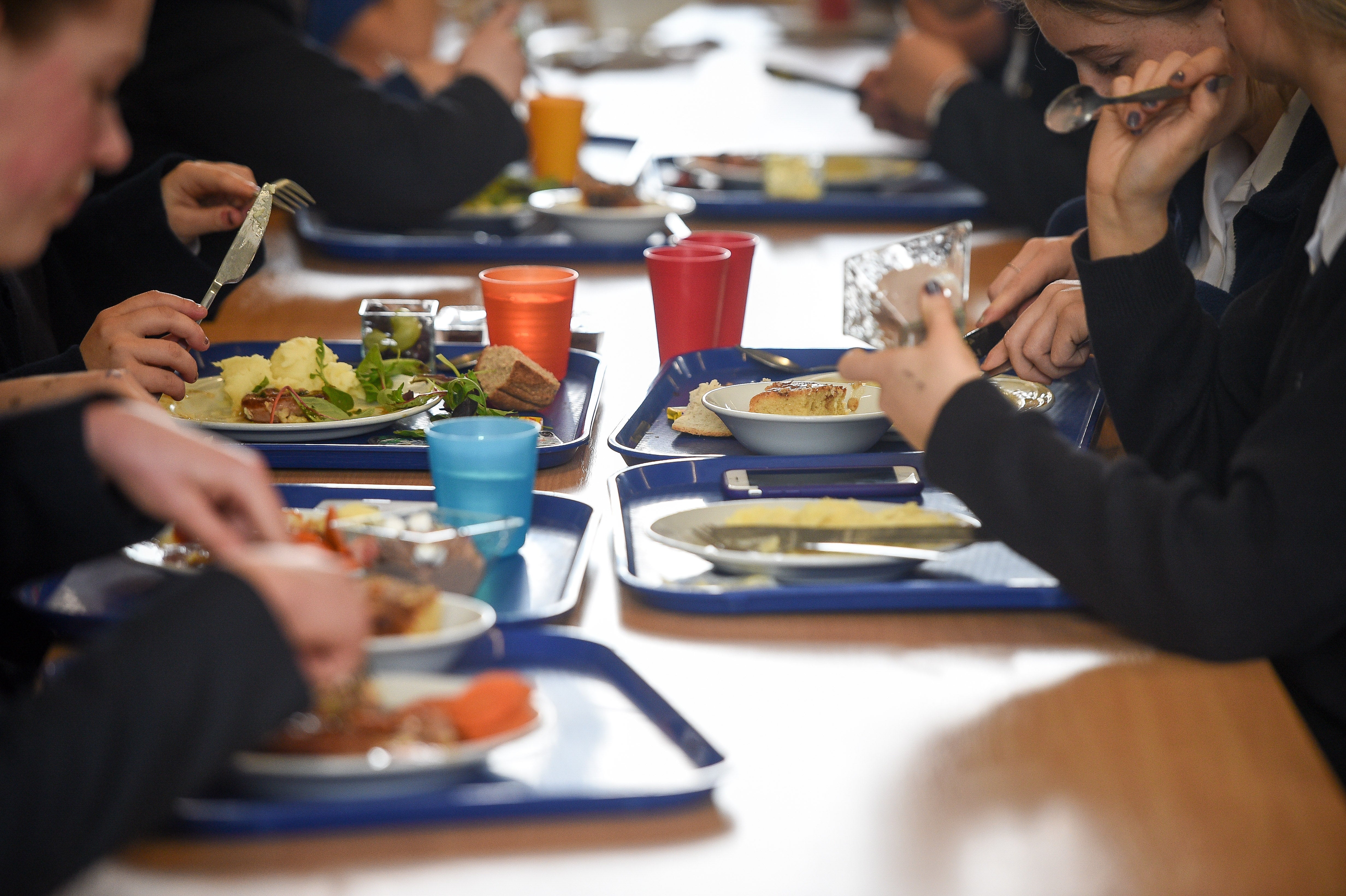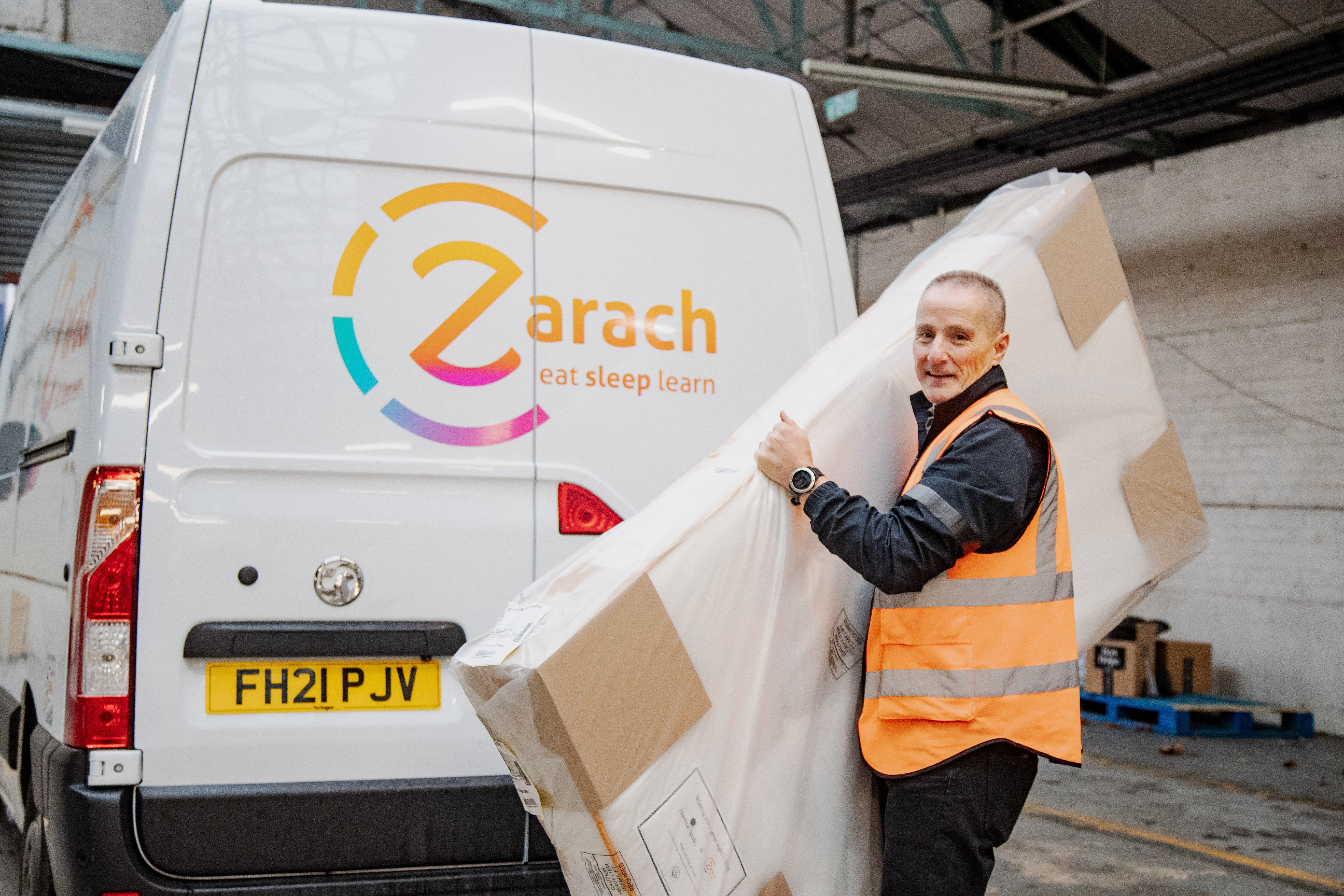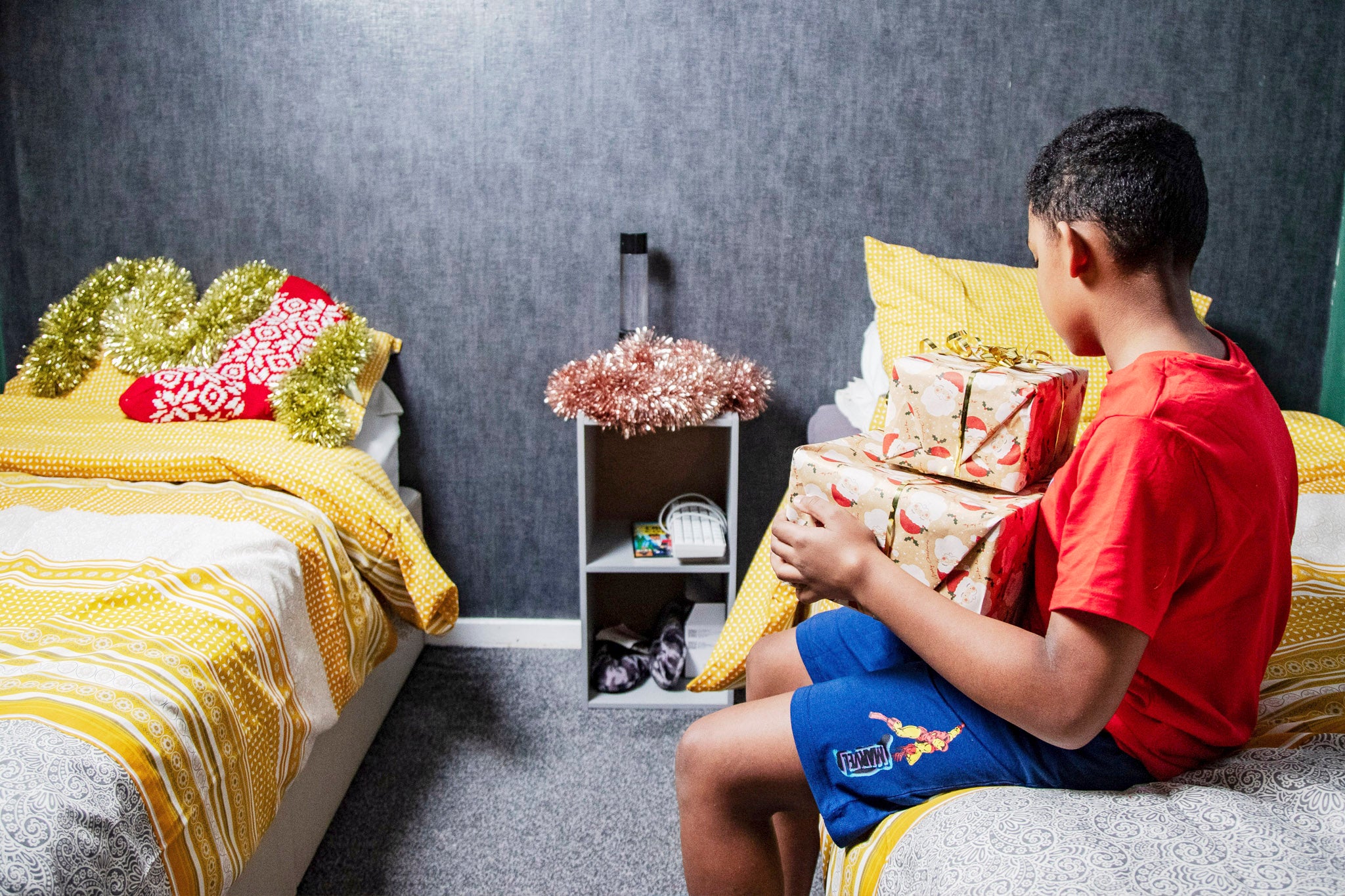As more go hungry, have we simply learned to live with child poverty?
It does not feature in Rishi Sunak’s current five ‘people’s priorities’, and doesn’t figure much in Keir Starmer’s agenda, either. More than a century after the pioneering efforts of the likes of Edwin Chadwick and Charles Dickens, Sean O’Grady asks if child poverty is here to stay


Poverty is hardly new – it finds mention in the Bible, among other ancient texts – and it is persistent. Perhaps it is ineradicable, but it is obviously capable of amelioration, by small deeds as well as by great works by the state. Poverty is, above all, still poorly understood in all its manifestations.
That is one reason why The Independent has decided to support the charity Zarach, and to highlight one particular aspect of child poverty that gains even less attention than most: bed poverty. Whatever one’s politics, it should be an astonishing, and rather shameful, fact that approaching a million children in the UK are living without a bed and are having to share with family members or sleep on the floor.
That is something we can do something about, and are doing so. Yet it begs the question of why, more than a century after the pioneering efforts of the likes of Edwin Chadwick, Charles Dickens, and Seebohm Rowntree, and decades of attention, child poverty is still so widespread today, and, in terms of relative poverty by comparison with rising living standards, it is on the rise.
Some of the reasons are obvious and straightforward. Periodic phases of austerity under governments of all parties have eroded the welfare state, restricted access to social security benefits and reduced the relative purchasing power of those benefits. One of the most dramatic practical pieces of evidence for this in recent years was the £20 uplift in weekly universal credit that was paid during the pandemic, only to be withdrawn, with not much resistance in October 2021.
Always intended to be temporary and a particular response to the extra costs inflicted by the emergency, a forensic study by the Institute for Fiscal Studies notes its immediate, widespread effect: “The impact of the uplift being in place for six months of 2021–22 was to reduce absolute poverty among the whole population by 0.3 percentage points equivalent to 0.6 percentage points on an annualised basis (379,000 individuals).”
The effect on child poverty was even greater – about 0.9 percentage points, making life easier for thousands. The £20 a week extra went to all families, ie including those out of work or unable to work, and it especially benefited those with larger families, in the sense that previous rounds of cuts had tended to hit them hardest.
In one sense the £20 uplift, rather crudely but effectively, helped redress some of the previous cuts to benefits aimed at children in poorer homes.

One example of that, in a non-partisan spirit, was the decision by the Labour government to reduce and phase out the lone parent premium back in 1998. Another would be the decision by the Conservative chancellor, George Osborne, in the 2015 Budget that child tax credits would be limited to two children for those born after 6 April 2017 (unless certain exceptions apply), rather than for each child or young person.
Similar arguments apply to that other experiment of the Covid era: the extension of free school meals into school holidays famously campaigned for by Marcus Rashford. That too had a direct impact on children’s wellbeing, albeit technically outside the benefits system; and some of the changes in eligibility have persisted.
Like bed poverty, child food poverty – quality and quantity – is an important facet of the phenomenon that is amenable to direct action – free meals and breakfast clubs as well as through food banks and other charities devoted to reducing food waste (eg the innovative Felix Project, also sponsored by The Independent). The benefits of a full belly for a child, like a good night’s sleep, can yield quite pervasive gains – more alert at school, healthier generally, and stronger.
The National Institute of Economic and Social Research (NIESR), not part of the poverty lobby, describes how to get the balance right: “The Department for Education currently spends £470 per year per pupil on means-tested free school meals. Expanding the scheme to 800,000 more children would thus imply around £400m further funding annually, in addition to any capital expenditure required to expand school kitchen facilities.
“While undoubtedly a significant outlay, that would constitute only a small fraction of what government spends annually on welfare and education, and would offer good value for money. The wider social benefits of the scheme through improved educational and health outcomes would ultimately save the government money by increasing future earnings potential and alleviating pressures on the NHS. However, such long-term benefits are not always well accounted for by the government’s short-term decision making.”
Indeed not. Of course, as the NIESR indicates, there are wider fiscal and economic arguments about benefits, redistribution and the effect of the tax “burden” on economic growth, fairness to working families, incentives to work and all the rest of it – but it’s just as well to acknowledge that boosting benefits in a targeted fashion is a quick way to make children happier, and can make sense as an investment.
All that thinking suggests that the obstacle to relieving child poverty in a direct and rapid fashion is equally as obvious: political resistance. Put at its bluntest, when push comes to shove, the British electorate doesn’t rate child poverty as a high priority, and distrusts the state’s ability to solve it efficiently. That scepticism tends to push the main parties in a similar direction. Things are different in other countries with a greater sense of social cohesion, notably the Nordic societies, but the revealed preferences of the British (or perhaps more accurately English) voter have been obvious for many decades.

Successive governments have tried to place child poverty at the centre of their manifestos, but effort to hit the targets and reduce it seem only to persist for as long as the economy as a whole is doing well.
History suggests that bold objectives and an uplifting vision are not enough. Thus, in line with his campaign pledges the then premier, Tony Blair, announced in March 1999 a commitment to “eradicate” child poverty in the UK by 2020. So serious was the intent, and no doubt sincere, that the chancellor, Gordon Brown, announced Labour’s intention to enshrine it in law, although this didn’t transpire until 2010 when the curtain was already coming down on New Labour. Then came the age of austerity and the Conservative-Liberal Democrat coalition, focused on the public finances.
The writing was on the wall for the child poverty target well before 2020. The Social Mobility and Child Poverty Commission, chaired by Alan Milburn, published its first annual State of the Nation report in October 2013. It concluded that the 2020 child poverty target was likely to be missed by a considerable margin, and that progress on social mobility could be undermined by the twin problems of youth unemployment and falling living standards. The 2020 target was quietly dropped by the Tories shortly after and is now disregarded.
For example, the Resolution Foundation found that the 2022 Budget, the first post-pandemic and aimed at repairing (again) the public finances, would push 1.3 million people – including half a million children – below the poverty line.
So we all know that 2020 has come and gone, and child poverty has not been eradicated. The politics of this are just as important as the economics, and give another clue as to why child poverty, like poverty generally, is so resistant to political action – and why charities, however inadequately, are drawn into filling the gaps.
Most obviously, in 1997 a goal to do anything by 23 years’ time pointed to over-optimism, if not cynicism, because it far outstripped the likely lifespan even of the then all-conquering New Labour administration. Whether that is better or not than having no target is debatable. What is not debatable, though, is that child poverty, or poverty of any kind, does not feature in Rishi Sunak’s current five “people’s priorities”.
Sunak would argue, fairly, that his two principal goals of cutting inflation and getting the economy growing will help those in poverty, as will a significant increase in social security payments and his general hope of widening opportunities. But child poverty, as such, doesn’t figure much in his speeches – no mentions in the conference speech, nor the keynote “five pledges” speech last January.

Poverty doesn’t figure much in Keir Starmer’s agenda, either, beyond vague talk about social justice. Before he was reshuffled, the then shadow work and pensions secretary, Jonathan Ashworth, a man once close to Brown and who still carries the ideological baggage, spoke about how getting rid of child poverty was for him a “crusade”. The two-child cap on child benefit was, to him, “heinous”.
Starmer’s attitude to the policy, heinous or not, is that it’s not going to be changed; and Liz Kendall, Ashworth’s replacement, promises to “deliver a bold, new, cross-government, child poverty strategy”. No words of “eradication”, even by the 2040s.
The caution is understandable. In an economy that seems stuck in a low growth, low investment, low wage, vicious spiral, the appetite, and scope for, radical redistribution is much diminished. Fixing the economy is an even bigger challenge than fixing poverty. The short to medium-term outlook, therefore, is poor, whoever will be running Britain.
In its latest study, the Resolution Foundation says that child poverty in 2028 is forecast to be the highest since 1999, with 170,000 more children in poverty than in 2022. It says: “This rise is driven entirely by large families: child poverty for families with three or more children is set to hit 55 per cent in 2027-28, and 77 per cent of children in families with four or more children will be in poverty by 2027-28.”
To borrow a phrase, such a situation is surely heinous, and many will still wonder if it has to be tolerated. The poor may always be with us, but they don’t always have to be led to be ever poorer.






Join our commenting forum
Join thought-provoking conversations, follow other Independent readers and see their replies
Comments